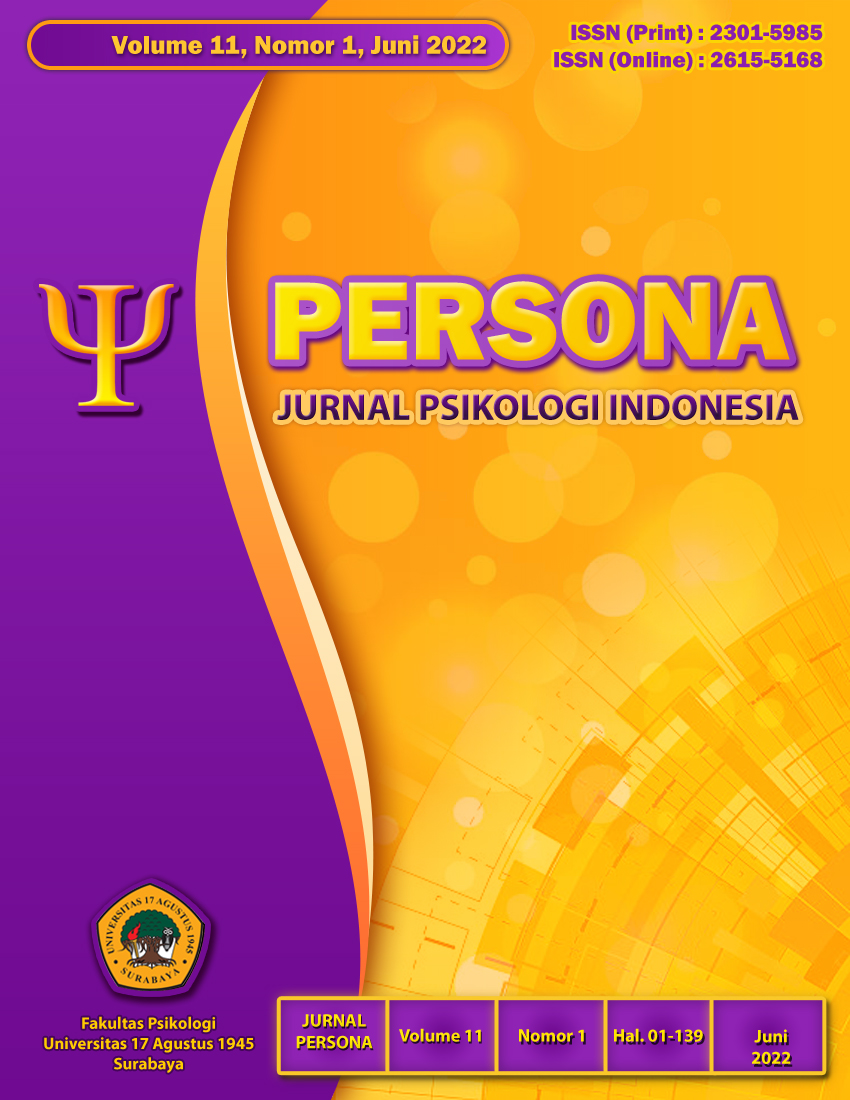Intensi tidur cukup mahasiswa berdasarkan Theory Of Planned Behavior: Analisis Structural Equation Modelling
DOI:
https://doi.org/10.30996/persona.v11i1.6176Keywords:
adequate sleep, college students, sleep intention, theory of planned behaviorAbstract
Abstract
Adequate sleep is essential since short sleep duration can cause various adverse effects. Previous research found that college students often find it difficult and have low intentions to get enough sleep due to several factors. This study aims to see the role of adequate sleep intention factors based on the Theory of Planned Behavior in college students, namely attitude toward behavior, subjective norm, and perceived behavioral control. Participants were 600 college students at a state university in Indonesia. The data was obtained through a questionnaire adapted from the Theory of Planned Behavior Questionnaire (α=0,793) and statistically analyzed using Structural Equation Modeling and Kruskal-Wallis. The results show that attitude toward behavior, subjective norm, and perceived behavioral control had a significant role in predicting adequate sleep intention in college students. Furthermore, attitude toward behavior has the most substantial role among the other factors. Through this research, future interventions that aim college students’ sleep intention can focus on targeting students’ attitude toward sleep behavior.
Keywords: adequate sleep; college students; sleep intention; structural equation modelling; theory of planned behavior
Abstrak
Tidur cukup sangat penting bagi manusia dan kurangnya waktu tidur dapat menyebabkan berbagai dampak negatif. Pada penelitian sebelumnya, ditemukan bahwa mahasiswa sering mengalami kesulitan dan memiliki intensi yang rendah untuk tidur cukup karena berbagai faktor. Penelitian ini bertujuan untuk melihat peran faktor-faktor yang mendasari intensi tidur cukup berdasarkan Theory of Planned Behavior pada mahasiswa, yaitu attitude toward behavior, subjective norm, dan perceived behavioral control. Partisipan pada penelitian ini adalah 600 mahasiswa salah satu perguruan tinggi negeri di Indonesia. Data diperoleh dengan menggunakan kuesioner yang diadaptasi dari Theory of Planned Behavior Questionnaire (α=0,793) dan dianalisis secara statistik dengan Structural Equation Modeling serta Kruskal-Wallis. Hasil menunjukkan bahwa attitude toward behavior, subjective norm, dan perceived behavioral control berperan secara signifikan terhadap intensi tidur cukup mahasiswa. Adapun faktor yang memiliki peran terbesar dalam memprediksi intensi tidur cukup pada mahasiswa adalah attitude toward behavior. Melalui hasil penelitian ini, para praktisi dapat menyasar sikap mahasiswa terhadap perilaku tidur cukup saat hendak merancang intervensi tidur cukup pada mahasiswa.
Kata kunci: intensi; mahasiswa; structural equation modelling; theory of planned behavior; tidur cukup
Downloads
References
Abidin, Said Zainal. 2002. Kebijakan Publik. Jakarta: Yayasan Pancur Sawah.
Agustino, Leo. 2008. Dasar-dasar Kebijakan Publik. Bandung: Alfabeta.
Arifin, Sofyan. 2010. Implementasi Undang-Undang Nomor 14 Tahun 2005 Dalam
Peningkatan Kualifikasi Akademik Guru SD Melalui Pendidikan Tinggi Jarak Jauh di
Wilayah Kabupaten Belitung. Jurnal Pendidikan Terbuka dan Jarak Jauh, Volume 11,
Nomor 1, Maret 2010, 35-43.
Arifin, Sofyan dan Agustini, Rosalita. 2010. Implementasi Kualifikasi Akademik Guru
Sekolah Dasar di Provinsi Kepulauan Bangka (Kajian Konseptual dan Pragmatis).
Makalah ini disampaikan pada Seminar Nasional FISIP-UT, 11 November 2010.
Aqib, Zainal. 2009. Standar Kualifikasi, kompetensi, sertifikasi, guru, kepala perguruan
tinggi, dan pengawas. Bandung: CV, Yrama Widya
Badan PPSDM Kesehatan. 2013. Standar Dosen Pendidikan Tinggi Vokasi Tenaga
Kesehatan. Jakarta: Pusat Pendidikan dan Pelatihan Tenaga Kesehatan.
Burhan Bungin. 2001. Metodologi Penelitian Sosial: Format-format Kuantitatif dan
Kualitatif. Surabaya: Airlangga University Press.
Burhan Bungin. 2012. Metode Penelitian Kualitatif. Jakarta: PT Raja Grafindo Persada.
Creswell, John W. (2014) Research Design: Pendekatan Kualitatif, Kuantitatif, dan Mixed.
Yogyakarta: Pustaka Pelajar.
Davis, G.B. 1991. Kerangka Dasar Sistem Informasi Manajemen Bagian 1. Jakarta: PT
Pustaka Binamas Pressindo.
Disdikal. 2013. Informasi Program Pendidikan TNI AL Tahun Anggaran 2013. Jakarta.
Downloads
Published
Issue
Section
License
The author who will publish the manuscript at Persona: Jurnal Psikologi Indonesia, agree to the following terms:
1. Authors retain copyright and grant the journal right of first publication with the work simultaneously licensed under a Creative Commons Attribution ShareAlike License that allows others to share the work with an acknowledgment of the work's authorship and initial publication in this journal.
2. Authors are able to enter into separate, additional contractual arrangements for the non-exclusive distribution of the journal's published version of the work (e.g., post it to an institutional repository or publish it in a book), with an acknowledgment of its initial publication in this journal.
3. Authors are permitted and encouraged to post their work online (e.g., in institutional repositories, pre-prints sites or on their website) prior to and during the submission process, as it can lead to productive exchanges, as well as earlier and greater dissemination of published work






